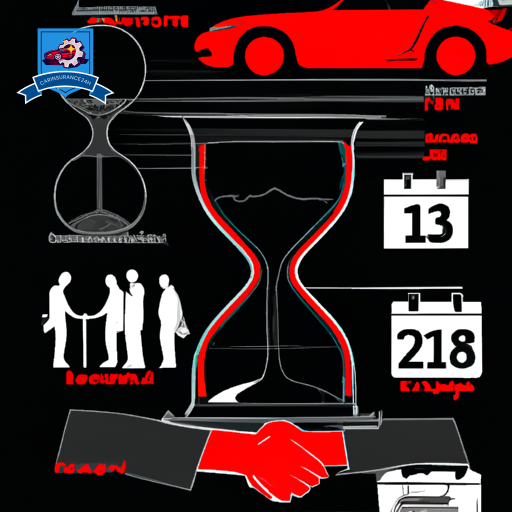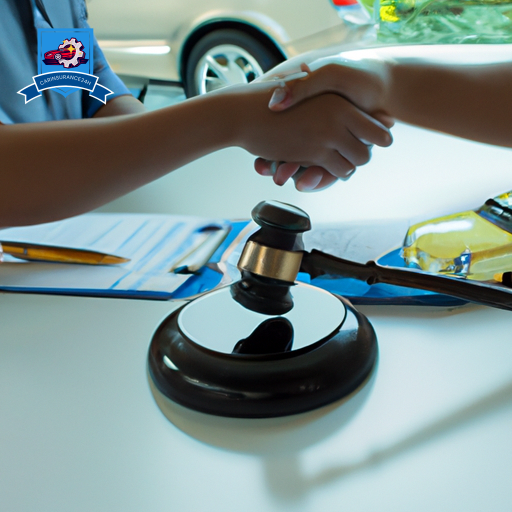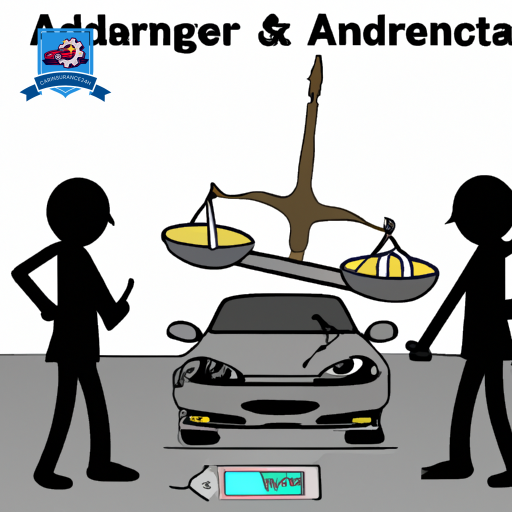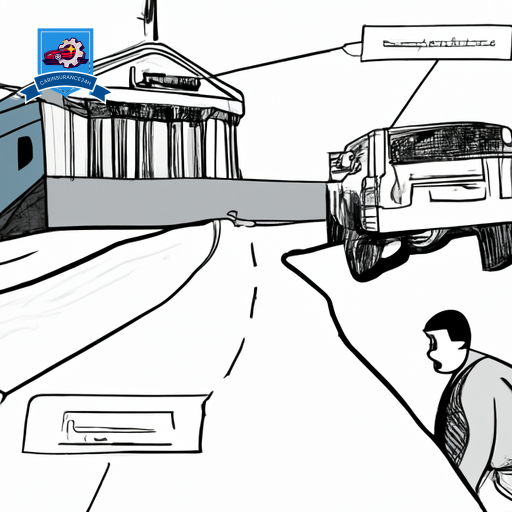When filing a car insurance claim, the array of required documents can be both critical and vast, encompassing everything from the initial accident report form to detailed repair estimates. Each document, such as your insurance policy information, personal identification, vehicle registration, photos of the damage, witness statements, and any pertinent medical records, plays a pivotal role in substantiating your claim.
Understanding the significance and necessity of each piece of documentation not only streamlines the claims process but also maximizes the potential for a favorable outcome. As we explore the nuances of these requirements, one might ponder the strategic importance of each document and how it contributes to the integrity of the claim process.
Accident Report Form
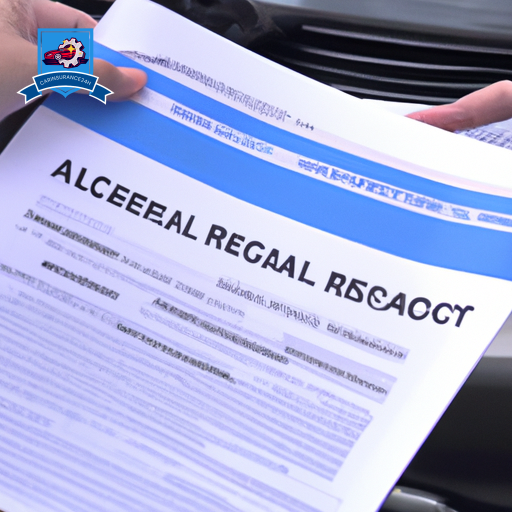
The Accident Report Form is a critical document that meticulously records the details of the incident, serving as a foundational element for processing a car insurance claim. This form is often the primary source of information for insurance companies, providing them with a thorough overview of the event. It encompasses various aspects of the accident, including the date, time, and location, as well as a detailed account of what transpired. The importance of this document cannot be overstated, as it not only facilitates the claims process but also serves as a crucial piece of evidence in determining the validity of the claim.
A key component of the Accident Report Form is its emphasis on adherence to and violations of traffic laws. This section is instrumental in evaluating fault and liability, as it highlights any breach of road safety regulations that may have contributed to the incident. By documenting these details, the form aids insurers in conducting a detailed analysis of the circumstances surrounding the accident.
Moreover, police involvement in the accident is another significant element captured in the Accident Report Form. The presence of law enforcement often implies the issuance of an official police report, which can corroborate the information provided in the form. This can be particularly useful in cases where the details of the accident are disputed or unclear. The integration of police reports with the Accident Report Form creates a comprehensive framework for evaluating the claim, ensuring that the insurance company has access to all necessary information to make an informed decision.
Insurance Policy Information
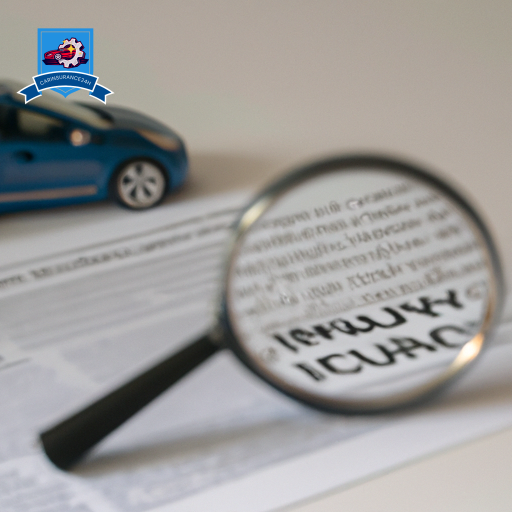
Moving on to the vital aspect of Insurance Policy Information, it is imperative to understand the significance of the policy number, which acts as a unique identifier in the claims process.
A thorough review of coverage details guarantees clarity on what is and isn’t protected under the policy, mitigating potential disputes.
Additionally, maintaining updated contact information facilitates seamless communication between the policyholder and the insurance provider, expediting the resolution of claims.
Policy Number Importance
Understanding the importance of your policy number is crucial when filing a car insurance claim, as it uniquely identifies your coverage agreement with the insurer. This number is a critical piece of information for both the policyholder and the insurance company, serving as a direct link to your policy benefits and the specifics of your coverage.
Having your policy number readily accessible can greatly expedite the claim process, ensuring that your insurer can quickly verify your coverage and begin evaluating your claim. It basically acts as a key that opens the details of your agreement, allowing for a smoother claim timeline.
Without this number, there could be unnecessary delays in processing your claim, potentially affecting the speed at which you receive assistance and the benefits you’re entitled to.
Coverage Details Overview
Delving into the specifics of your insurance policy reveals essential coverage details essential for filing a claim effectively. Understanding these details is paramount, as it dictates the scope of protection provided in the event of an incident.
Each policy delineates certain coverage exclusions – scenarios or damages not covered – which are critical to recognize before initiating a claim. These exclusions play a significant role in determining the viability of your claim and its subsequent processing.
Additionally, being acquainted with the terms regarding premium adjustments is vital. Such adjustments might occur post-claim, depending on the nature and frequency of claims filed. This knowledge not only aids in setting realistic expectations but also in handling the complexities of the claim process with greater ease and confidence.
Contact Information Necessity
Having accurate contact information for your insurance provider is an essential requirement when initiating a car insurance claim. This includes not only the general contact details but also direct lines to specific departments or representatives handling claims.
Ensuring privacy concerns are addressed, it’s critical to verify the authenticity of the communication methods provided. Whether it’s via phone, email, or postal mail, each channel should offer secure and efficient communication. This necessitates a clear understanding of the insurance company’s preferred methods for receiving claim documentation and queries.
Additionally, maintaining up-to-date contact information on your part allows for a smoother, more responsive interaction throughout the claims process. The necessity of accurate contact information transcends convenience, impacting the effectiveness and privacy of the entire claims procedure.
Personal Identification
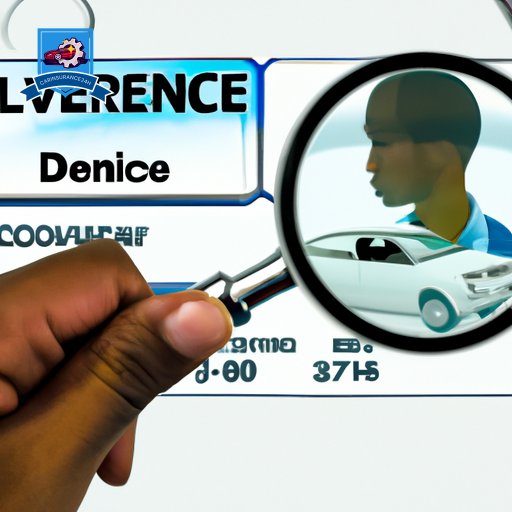
One must provide valid personal identification to initiate a car insurance claim process effectively. This step is important for several reasons, including the prevention of identity theft and the verification of the claimant’s age, which may affect the coverage eligibility and the claims process. Personal identification helps make sure that the person filing the claim is indeed the policyholder or someone authorized to act on their behalf, thereby safeguarding against fraudulent claims.
| Type of Identification | Purpose |
|---|---|
| Driver’s License | Serves as a primary form of identification, verifying the claimant’s identity and driving eligibility. |
| Passport | Acts as a secondary form of ID for additional verification, useful especially in cases where the driver’s license is unavailable. |
| Birth Certificate | Assists in age verification, important for policies where age influences coverage terms or claim processes. |
The necessity for reliable identification stems from the insurance industry’s strict requirements to combat fraud and comply with legal standards. By presenting a valid form of identification, claimants not only expedite the claims process but also contribute to the integrity and efficiency of the system. It is advisable for individuals to have their identification readily accessible to avoid delays in the claims process.
Moreover, the use of personal identification in the claims process highlights the importance of accuracy in the information provided to insurance companies. Misrepresentation or inaccuracies can lead to complications, delayed claim processing, or denial. Hence, it is imperative for claimants to make sure that their personal identification documents are current and accurately reflect their legal identity.
Vehicle Registration

Transitioning from the topic of Personal Identification, we now focus on Vehicle Registration, a critical component in the car insurance claim process.
The importance of registration cannot be understated, as it serves as the legal proof of vehicle ownership and is essential for validation during the claim process.
We will explore the registration verification process and the significance of updating registration details to ensure a streamlined and efficient claim resolution.
Importance of Registration
Vehicle registration serves as a critical component in the process of filing a car insurance claim, establishing legal ownership and the right to recover damages. This document is pivotal not only for identification purposes but also for facilitating ownership transfer and evaluating registration fees, which are integral to the claim process.
| Aspect | Importance |
|---|---|
| Legal Ownership | Confirms the claimant’s legal right to the vehicle, essential for processing insurance claims. |
| Ownership Transfer | Necessary for updating records and ensuring the rightful owner is compensated in case of a claim. |
| Registration Fees | Impacts the overall financial considerations during the claim process. |
Understanding the importance of vehicle registration underscores its role in the seamless execution of insurance claims, reinforcing its value beyond a mere legal formality.
Registration Verification Process
To guarantee the accuracy and legitimacy of a claim, the registration verification process plays an important role in the car insurance claim procedure. This step ensures that the vehicle involved in the claim is correctly registered to the claimant, thereby aiding in fraud prevention.
Utilizing online authentication tools, insurers can rapidly verify the vehicle’s registration status, cross-referencing it with official databases. This digital verification method not only streamlines the process but also notably reduces the potential for fraudulent claims by establishing a secure and reliable means of confirmation.
Through this meticulous approach, insurance companies uphold the integrity of the claims process, safeguarding both their interests and those of genuine claimants.
Updating Registration Details
Following the verification of registration details, it is crucial for claimants to make certain that their vehicle registration information is up-to-date and accurately reflects their current details. It is vital to rectify any discrepancies immediately to avoid complications with insurance claims.
Most jurisdictions now offer the convenience of online updates for vehicle registration, allowing for swift and efficient modifications to personal details, address changes, or corrections. Additionally, many motor vehicle departments send out renewal reminders via email or postal mail, ensuring that vehicle owners are prompted to review and update their registration details promptly.
Adhering to these reminders not only facilitates a smoother insurance claim process but also ensures compliance with local regulations, thereby avoiding potential legal issues.
Photos of Damage
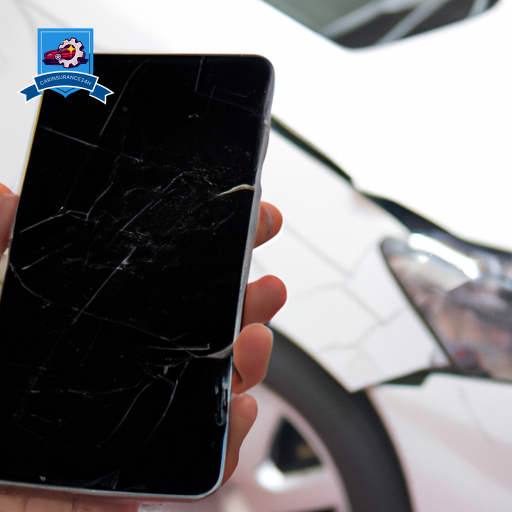
Capturing clear and thorough photos of the damage is an essential step in the car insurance claim process. Photographic evidence plays an important role in evaluating the extent of the damage, determining the damage severity, and facilitating the swift processing of your claim. It provides an indisputable record of the condition of your vehicle immediately following the incident, which can be invaluable during the evaluation phase of your claim.
When taking photos of the damage, it is important to cover various angles and distances to guarantee a comprehensive view. The following table outlines the key perspectives and details that should be captured to enhance the effectiveness of your photographic evidence:
| Aspect | Detail | Purpose |
|---|---|---|
| Overall View | Capture the entire vehicle from several angles | To show the context of the damage |
| Close-up | Zoom in on specific damaged areas | To highlight the extent and nature of damage |
| Different Angles | Take photos from various angles around the damage | To provide a 3D perspective of the damage |
| License Plate | Include the vehicle’s license plate in some photos | For vehicle identification |
| Surroundings | Photograph the accident scene and surroundings | To capture potential contributing factors |
Ensuring the clarity and comprehensiveness of the photos will significantly aid in accurately determining the damage severity. It’s also advisable to take these photos as soon as safely possible following the incident to capture the most accurate state of the damage. Remember, these photos serve as the foundational photographic evidence for your claim.
Witness Statements
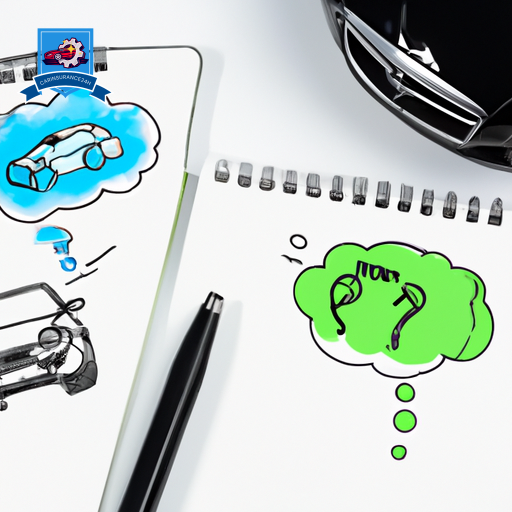
Gathering statements from witnesses at the scene of the incident can provide invaluable insights and support for your car insurance claim. Witness statements can bolster your account of events, offering a third-party perspective that may clarify disputes about who was at fault. When incorporating witness accounts, consider the following important aspects to guarantee their effectiveness in supporting your claim:
-
Timeliness of Collection: Collect witness statements as soon as possible after the incident. The fresher the incident is in a witness’s memory, the more accurate their account will be. Delay in collecting statements can lead to forgetfulness or altered recollections, which may diminish the statement’s value.
-
Witness Credibility: Evaluate the credibility of your witnesses. Witnesses should have no personal or financial interest in the outcome of your claim, as this can bias their statements. Objective, unbiased witnesses can greatly enhance your claim.
-
Detail and Consistency: Encourage witnesses to be as detailed as possible, noting the time, location, and events as they remember them. Consistency in witness statements, especially when they corroborate each other without contradictions, can significantly improve their reliability and impact.
-
Documentation: Ensure that all witness statements are properly documented. Written statements are preferable, and having them signed and dated adds to their authenticity. If witnesses are willing, including their contact information can be helpful if further clarification or testimony is needed.
Incorporating properly documented and credible witness statements, collected promptly, can have a major impact on the outcome of your car insurance claim. These statements can serve as a powerful tool in establishing the facts and supporting your position.
Medical Records
Securing thorough medical records is a critical step in substantiating your car insurance claim, as it provides concrete evidence of injuries sustained and treatments received due to the incident. These documents serve as a detailed account of the healthcare costs incurred and the treatment timelines followed, which are indispensable for verifying the extent of the physical damages experienced as a result of the accident.
When compiling medical records, it is essential to include all relevant documents that reflect the scope of medical attention received. This encompasses initial medical reports, diagnostic tests, treatment prescriptions, hospitalization records, and detailed invoices from healthcare providers. Each document plays a pivotal role in painting a detailed picture of the medical intervention necessitated by the accident, thereby justifying the compensation claim for healthcare costs.
Moreover, treatment timelines documented in these medical records offer a chronological insight into the recovery process, highlighting the duration and intensity of medical care required. This aspect is particularly significant in cases where long-term rehabilitation or therapy is needed, as it directly influences the claim’s valuation concerning ongoing and future medical expenses.
Repair Estimates

After addressing the importance of medical records in substantiating a car insurance claim, it is equally important to focus on obtaining accurate repair estimates for the damaged vehicle. Repair estimates are vital for several reasons: they provide a detailed assessment of the damage, help in the financial planning for repairs, and are essential in the claim process with your insurance company.
When seeking repair estimates, consider the following steps:
-
Select Multiple Repair Workshops: It’s advisable to obtain estimates from several reputable repair workshops. This not only gives you a range of costs but also an insight into the extent of the damage. Different workshops may provide varying levels of detail and pricing, which can be critical for the next step.
-
Document All Estimates: Ensure that each estimate is detailed and includes a breakdown of the costs involved. This documentation is essential for your insurance claim and for your personal records.
-
Engage in Estimate Negotiations: Armed with multiple estimates, you have the leverage to negotiate better rates. Some repair workshops might be willing to match lower estimates or offer discounts.
-
Communicate with Your Insurance Company: Present your findings to your insurance provider. They may have preferred repair workshops or might require estimates from specific places. Keeping open communication ensures that the repair process aligns with their policies.
Accurate repair estimates are not only about understanding the financial implications but also about ensuring that the repair process is smooth and aligned with your insurance policy. The role of repair workshops and the potential for estimate negotiations cannot be overstated in this scenario.
Frequently Asked Questions
How Does the Process of Filing a Car Insurance Claim Affect My Insurance Premiums in the Future?
Filing a car insurance claim can affect future insurance premiums through premium dynamics. Insurers may adjust rates based on claim frequency, potentially increasing premiums to reflect the perceived risk associated with a higher number of claims filed.
Can I File a Car Insurance Claim Without a Police Report if the Accident Was Minor?
In many jurisdictions, filing a car insurance claim without a police report for a minor accident is permissible. However, adherence to traffic laws and the prevention of insurance fraud should always be prioritized.
What Are the Potential Consequences of Not Filing a Car Insurance Claim After an Accident?
Not filing a car insurance claim after an accident can lead to legal repercussions, including liability disputes and financial losses. Additionally, the psychological impact of unresolved issues may affect the well-being of the involved parties.
How Do I Handle Discrepancies Between My Repair Estimates and the Insurance Adjuster’s Estimate?
To address discrepancies between repair estimates and the insurance adjuster’s figure, consider negotiation strategies. Requesting an independent appraisal may also help reconcile differences, ensuring a fair assessment and resolution to the claim process.
Is There a Time Limit for Submitting Additional Evidence or Documentation After the Initial Car Insurance Claim Has Been Filed?
Insurance policies often stipulate specific time frames for submitting additional evidence post-initial claim filing. It is important to verify the evidence’s validity and adhere to these submission deadlines to guarantee your claim’s successful processing.




